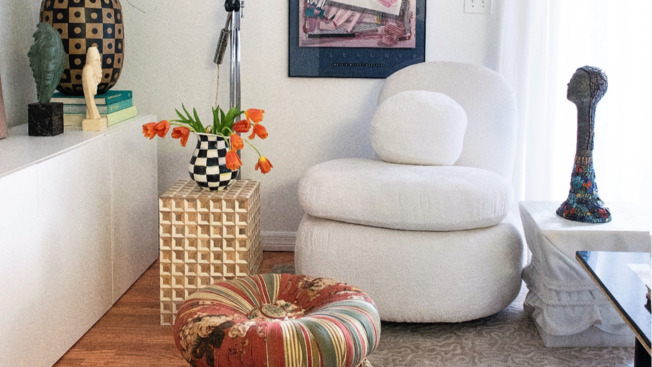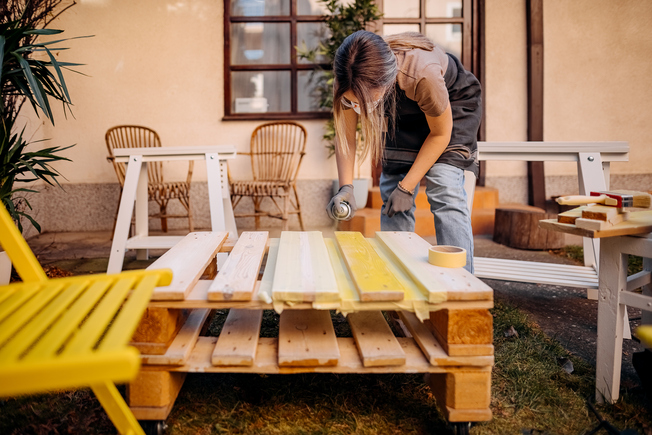
The Do's and Don'ts of Storing Wine in Your Apartment
Jan 25, 2024
As you emerge from your days of dorm dwelling into your apartment-renting years, two transitions are likely to take place: One, you start accumulating all sorts of responsibilities nobody warned you about, and two, you feel your relationship to cheap beer and boxed wine begin to fizzle out (just let it happen). At the intersection of those two transitions, you’ll find an interest in proper wine storage.
That’s right, your newfound inclination to have wines in your apartment that aren’t Franzia comes with — surprise — responsibility. It’s not particularly high stakes like taxes and budgeting, but it’s important if you’re concerned about preserving flavor and quality.
“Wine is a living product,” says Hannah Carroll, lead sommelier at Rebel Rebel wine bar in Somerville, MA. “It’s changing and evolving for its entire lifespan, but there are definitely ways to protect your bottles and keep their true character intact.” Carroll is here to guide you through the common mistakes people make when storing wine in rented digs — and how to avoid them.
What temperature should you store wine at?
Controlling the climate around your wine is paramount to its preservation. Wine should ideally be stored in a dark place away from direct sunlight at around 55 to 60 degrees, whether it’s a cabernet or a sauvignon blanc. The ideal humidity levels for long-term storage are between 60 and 70 percent if you are storing in a wine refrigerator (just be careful to prevent mold growth if you’re turning up the humidity).
“I’d say the number one risk to wine storage is heat,” says Carroll. “If a bottle of wine is stored too warm, the aging process can speed up and the nuance of the wine can get lost.”
If you live in an environment where your storage space traps heat or your wine rack happens to be situated above a heater, then it’s time to make an adjustment.
“If you’ve got a collection, keep it in an air-conditioned part of your place,” she says.
And on the flip side, if your city has an extremely cold winter and you’re someone keeping wine in your garage, for example, think again. Wine can, in fact, freeze. If it does, the water inside it can expand and the whole bottle could explode.
But a word of advice from Carroll as you take mental notes: “Don’t stress about it,” she says. “A little temperature fluctuation won’t make the wine undrinkable or unsafe.” Sigh of relief.
Where should you store your wine?
Most rentals don’t come with wine cellars or wine fridges — but if you’re assuming that you’ll have to DIY a complicated wine storage box with insulation and temperature control, that’s not the case. “Wine storage doesn’t have to be glamorous,” says Carroll.
Instead, simply use your senses. “Think of spaces that are dark and cool and easily accessible,” she suggests. “A corner of your closet, pantry, or basement will do the trick.”
She says you can even ask your local wine bar or shop for cardboard wine boxes with individual slots for each bottle so you can pack your collection of bottles safely and store them more easily. Just one word of advice on that front: “Make sure you label them so you don’t forget what’s in there,” she says.
If you’ve got a smaller apartment with not-so-much room for wine storage, fear not. “Use what you have,” says Carroll. Cupboards in your kitchen that have space, closet shelving or drawers, or on a bar cart with other alcohol. The fridge will work in a pinch if you don’t mind taking up space with wine bottles; just store bottles on their sides in the fridge to save space and to keep the cork moist.
How do you open an old bottle of wine?
There’s nothing more exciting than opening a bottle from your wine collection that you’ve been saving for a special occasion. In these cases, Carroll says you should consider two main factors to make sure your experience is as magical as you’ve been envisioning.
The first comes before the bottle is opened, when the only thing between you and the wine is the cork. “Corks can get dry and crumbly if they’re stored for a long time without moisture,” she says. Her advice: Work slowly, gently, and confidently with the cork when you’re easing it out of the bottle with your tool of choice.
The second comes after the cork is out: “You might also encounter some solids or sediment in a bottle of wine when it’s been aging for a while,” she says. This is where decanting your wine comes into play. You can use a big mason jar or a coffee pot if you don’t have a decanter, but you’ll want to carefully pour the wine into your other vessel to separate the clear wine from the sediment.
“Work with good light and pour very slowly, letting the wine pass through the neck of the bottle but keeping the sediment secured,” Carroll says. If you stir up the sediment into the clear wine, you’ll likely experience some pretty bitter flavors.
How do you know if a bottle of wine has gone bad?
Don’t fret if you accidentally screw up opening a bottle, so to speak. “If you open a bottle and find that it’s a little messed up, try not to worry about it too much,” says Carroll. “It happens. It’s not the end of the world — and there will always be more wine.”
Similarly, if you’ve found yourself without a cork for your unfinished bottle after cleaning up from a meal or party, don’t panic. Carroll says you can use plastic wrap or aluminum foil to prevent oxidation, which can ruin wine. “If you’re so inclined,” she says, “you could get yourself a little bottle stopper that you can re-use.”
Whether your cork is real or made of plastic wrap, Carroll says to pop any opened bottles back in the fridge (no matter the color) and they’ll stay fresh for around two days after opening. And after those two days: “If you don’t make it through the bottle, save it for cooking,” she says. “Splash your sauces with abundance.”
If you’re on the fence about whether you’ve been a responsible-enough wine owner, simply have a taste. If you like it, Carroll says, don’t fret. You’ve probably done nothing wrong. “If it tastes right, go ahead and enjoy your bottle — someone worked hard to make it for you.”
Tips for Serving Wine
- The shape of your glass matters: For example, red wine is typically served in a more bulbous glass and white wine in a stemmed glass.
- When you pour your wine, hold the bottle by the neck and pour at an angle to avoid spilling.
- If you’re serving your guests, pour on their right side.
- Serve white wine at 45 degrees and red wine at 60 degrees
- Light bodied, sweet, or bubbly wines taste better with cooler temperatures. Fuller-bodied, fruity, and tannic wines (they make your mouth feel “dry”) taste better when they’re slightly warmer.
Top metro areas
Atlanta Metro Apartments
1,474 apartments starting at $600/month
Austin Metro Apartments
1,402 apartments starting at $522/month
Baltimore Metro Apartments
735 apartments starting at $500/month
Boston Metro Apartments
5,088 apartments starting at $650/month
Charlotte Metro Apartments
908 apartments starting at $475/month
Chicago Metro Apartments
3,375 apartments starting at $400/month
Dallas Fort Worth Metro Apartments
2,743 apartments starting at $400/month
Houston Metro Apartments
1,070 apartments starting at $450/month
Las Vegas Metro Apartments
1,028 apartments starting at $670/month
Los Angeles Metro Apartments
4,777 apartments starting at $700/month
Miami Metro Apartments
571 apartments starting at $1,025/month
Milwaukee Metro Apartments
790 apartments starting at $500/month
New York Metro Apartments
2,144 apartments starting at $945/month
Orlando Metro Apartments
1,001 apartments starting at $550/month
Philadelphia Metro Apartments
1,767 apartments starting at $450/month
Phoenix Metro Apartments
1,551 apartments starting at $700/month
Pittsburgh Metro Apartments
1,083 apartments starting at $500/month
Portland Metro Apartments
1,735 apartments starting at $695/month
Raleigh Metro Apartments
808 apartments starting at $575/month
San Antonio Metro Apartments
1,035 apartments starting at $450/month
San Diego Metro Apartments
1,522 apartments starting at $590/month
San Francisco Metro Apartments
1,743 apartments starting at $850/month
Seattle Metro Apartments
1,525 apartments starting at $525/month
Tampa Metro Apartments
1,040 apartments starting at $725/month
Washington Metro Apartments
725 apartments starting at $550/month


